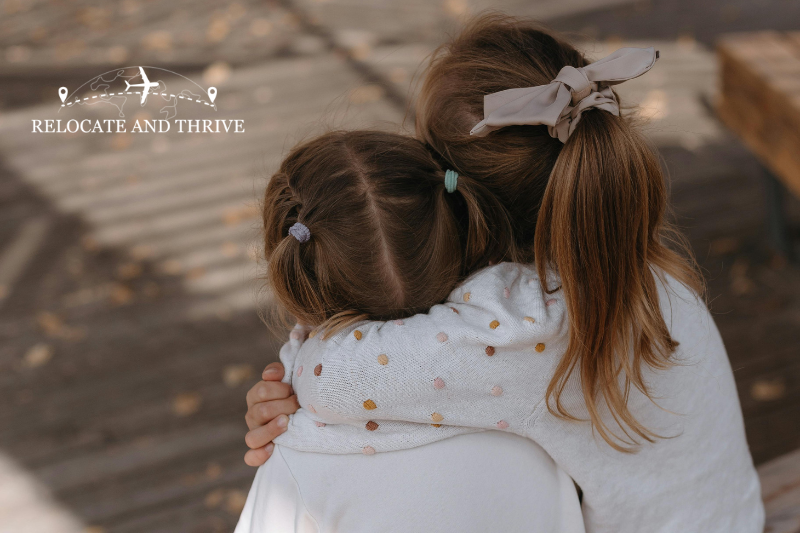Raising Third Culture Kids: Challenges and Benefits
Cold Open: A Suitcase Full of Stickers
At the airport check‑in counter my child set a suitcase on the scale, a small one covered in stickers from cities we have called home. The agent asked the classic question, “Where are you from?” My kid paused, smiled, and answered with a list that sounded like a travelogue. The agent laughed. I did too. That moment is our family in miniature, a collage of places, people, and routines that do not fit in a single box. Raising Third Culture Kids is beautiful and occasionally bewildering, which is why I keep notes, small tools that help us turn constant change into a steady life.
What Exactly Is a Third Culture Kid?
A Third Culture Kid, or TCK, is a child who grows up in a culture different from the culture of their parents or the passport they carry. The “third culture” is the layered blend that forms when a child’s home life and host countries meet. Families arrive at this life for many reasons, diplomatic or military postings, international corporate roles, NGO and humanitarian work, faith missions, migrant and mixed‑nationality families, or simply because remote work allows movement.
TCKs are not a single type. Some move every two years, others live a decade abroad with frequent trips “home.” Some attend international schools, others go local, some do hybrid or online schooling. The variety is wide, which is exactly why having a shared language for the experience helps.
The TCK Paradox: Both and Both Again
Most TCKs describe a feeling of being from everywhere and nowhere. They can switch greetings, accents, and expectations faster than most adults, yet hesitate when someone asks for a one‑word answer to “home.” They collect friendships across time zones. They grieve for a place even while they are excited about the next one. They are proud of their mobility, and tired of goodbyes. That is the paradox, they hold two truths at once, love for here and longing for there. Our job as parents is not to force certainty, it is to give them language, rituals, and roots that travel.
Core Challenges Parents Should Expect
Belonging and Identity Ambiguity
“Where am I most?” is a TCK question. Kids notice they are always a little different, the accent, the lunch, the holidays. Normalize the question. Let identity be a playlist, not a single track. Create spaces where all their songs can play, home traditions, local customs, and family quirks.
Goodbyes and Hidden Grief
Departures stack up. A child may lose a school, a teammate, a trusted neighbor, and a favorite park in one move. That is grief, even when the next place is exciting. Name it. Mark farewells on purpose. Small rituals help, a goodbye book for classmates to sign, a last walk through favorite streets, a photo of the view from their window.
Friendship Turnover
New kids become expert greeters, then watch friends leave. Teach quick‑start friendship skills, asking good questions, hosting simple hangouts, staying in touch well. Also teach boundaries, it is okay to keep a slow pace when the heart is tired.
School Discontinuity
Curriculums do not always match. Reading levels, math scope, and grading systems jump around. Keep a home portfolio with report cards, work samples, test results, and any special‑education documentation. Advocate early. Teachers usually want to help, they just need a clear picture.
Language and Literacy Gaps
Fluency in playground talk does not equal academic vocabulary. If a child switches languages mid‑education, they may need scaffolds in science and humanities. Maintain heritage language for family connection, and keep the school language strong enough for essays and exams.
Family System Stress
Moves expose every weak joint in a family system. One parent might love the adventure while another carries relocation admin and invisible labor. Talk about roles before the boxes arrive. Protect rest. Name the “trailing spouse” feelings and career shifts with respect.
Safety and Autonomy
New cities come with new rules. Curfews, transport independence, dating norms, online culture, all shift. Create a local safety map together, safe routes, trusted adults, emergency numbers, and practice what to do if plans change.
Re‑entry or Reentry Shock
Returning to a passport country can be harder than leaving it. Kids expect ease and find they are out of sync. Treat re‑entry as a move, not a homecoming. Do the same rituals, same scaffolds, same patience.
Signature Benefits Worth Nurturing
Adaptability and Cognitive Flex
TCKs learn to read new systems fast. They become comfortable with change and can hold multiple possibilities in mind. Encourage this skill with low‑stakes experiments, new clubs, new bus routes, new recipes.
Empathy and Perspective‑Taking
They notice how different people mark respect, humor, or disagreement. Invite them to reflect, what does kindness look like in this classroom, on this team, in this city?
Communication Gifts
Many TCKs become multilingual or develop strong code‑switching skills. Celebrate register changes, the way they speak to grandparents versus teachers versus friends. It is not pretending, it is care for context.
Creative Problem Solving
When systems do not match, kids invent workarounds. Give them small planning jobs, booking a family outing, budgeting for a dorm move, plotting a safe bike route.
Curiosity and Global Awareness
Maps become storybooks. Keep a wall map or digital pinboard. Tie places to people, not just to airports.
Bridge‑Building
TCKs can be translated between groups. Encourage peer mediation, mentoring newer students, or helping at cultural fairs.
Resilience With Caveats
Grit is good when feelings are not buried. Model healthy coping, rest days, therapy when needed, and the sentence, “Strong and struggling can live in the same person.”
A Parent Playbook That Actually Helps
Family Culture Statement
Write one page that says who you are as a family. Values, how you treat people, what rest looks like, what screens look like, what faith or meaning practices look like. Keep it portable. If you move, the statement moves too.
Rituals and Anchors
Pick weekly and seasonal rituals that survive time zones. Taco Tuesdays, Friday board games, Sunday calls with grandparents, a birthday rule that holds anywhere. Anchors cut through the fog of newness.
Roots and Routes Map
Print a map or open a shared digital one. Mark home bases, favorite parks, people who matter. Add photos and stories. The map makes history visible and shows that love travels.
Memory‑Keeping That Kids Control
Create highlight reels by month, not just by move. Let kids curate albums, choose what to print, and write captions. Build a goodbye book for each place, classmates sign it, teachers add a note, neighbors scribble recipes.
Third Places
Find an activity that belongs to the kid, not the school. Sports clubs, music studios, youth groups, makerspaces. Repeat the hunt in every move, ask locals for two options and try both within the first month.
Communication Frameworks
Use short check‑ins to keep feelings visible. We use red, yellow, green days. Red needs comfort, yellow needs a plan, green can share energy with the family. Add a weekly family meeting with three questions, what was good, what was hard, what do we need next week?
Transition Tools: RAFT and the 5R Checklist
RAFT is a simple sequence many families use when leaving a place.
Reconciliation: clean up misunderstandings, say sorry or thank you where needed. Kids sleep lighter when goodbyes are clear.
Affirmation: name what you loved about people and places. Write notes, make small gifts, take photos in favorite spots.
Farewell: plan real goodbyes to people, pets, places, and routines. A last bike ride counts.
Think Destination: look forward on purpose. Print photos of the new school, learn the bus number, pick a first weekend treat.
Add the 5R Checklist for the first 30 days after arrival.
Routines: sleep, meals, movement, school rhythm.
Relationships: a recurring activity and two names to greet each week.
Roots: a finished corner at home, a bedtime ritual, a weekly call with faraway loved ones.
Rituals: a small practice that marks time, Friday pastry, Sunday park.
Roles: who handles which chores, who is the questions person for school, for transport, for paperwork
Age‑by‑Age Guidance
Early Childhood, 3 to 6
Keep attachment first. Maintain predictable routines and familiar objects. Use picture calendars to show travel days and “home days.” Practice goodbyes with stuffed animals. Offer sensory anchors in the new home, a soft blanket, a nightlight, a music playlist from the last place.
Tweens, 7 to 12
This is the sweet spot for skills. Teach bus etiquette, pocket money budgeting, and how to invite a new friend over with simple snacks. Help them join one steady activity so faces repeat. Watch for friendship grief that shows up as irritability. Keep screens on a clear schedule while social roots grow.
Teens, 13 to 18
Identity asks louder questions here. Give teens real say in decisions where you can, room setup, elective choices, part‑time work, volunteer projects. Track academics carefully, credit transfers, graduation requirements, testing windows. Keep a trusted adult network, a teacher, a coach, a mentor outside the family. Talk about dating and consent early, norms change by country. Discuss college planning from abroad, testing sites, recommendation letters, and how to describe a portable life in applications.
Schooling Pathways: Pros and Cons
International Schools
Pros, curriculum continuity, peer group used to mobility, activities built for transient populations. Cons, tuition cost, sometimes a bubble that limits local language exposure.
Local Schools
Pros, deep cultural and language immersion, neighborhood friendships. Cons, curriculum mismatch with passport systems, possible language shock, paperwork hurdles.
Homeschool and Online Hybrids
Pros, flexible travel timing, individualized pacing, family‑wide alignment. Cons, parent energy required, social scaffolding needed, accreditation research is essential.
Questions to weigh across all paths, language of instruction, accreditation for next steps, special‑education supports, calendar fit, transport time, and the child’s temperament.
Language Strategy Without Pressure
Pick a simple rule you can keep. One‑Parent‑One‑Language works for many families, others choose a home language for meals and a school language for homework. Read aloud far longer than you think you should. Keep heritage language playful, games, shows, cousins on video calls, recipes with grandparents. Protect the school language for writing and science words. Do not turn language into a power struggle, consistency beats intensity.
Friendship and Community: Making Hello Easier, Goodbye Kinder
Create an onboarding script for each move. The first week, map three walking routes from home. The first month, host one low‑lift gather, popcorn and a movie, a board game afternoon, a pick‑up sport at the park. Teach the two‑invite rule, if an invitee declines twice, move on kindly and try a different circle. For goodbyes, plan a last sleepover, a group photo at a favorite place, and a calendar date for the first video call after the move.
Mental Health: Red Flags and Green Lights
Watch for signs that a child is carrying more than normal transition stress. Red flags include long‑lasting sleep changes, sudden perfectionism or shutdown around schoolwork, loss of interest in favorite things, isolation, substance experimentation, persistent stomachaches or headaches without a medical cause, comments about not wanting to be here. Green lights include laughing again, making small plans, curiosity returning, and stable sleep.
If you need help, look for counselors with cross‑cultural experience and youth focus. Ask schools for referrals. If services are limited in your location, consider telehealth options. Normalize therapy as coaching for the heart and mind.
Parent Pitfalls to Avoid
Toxic positivity: skipping right to silver linings can make kids feel unseen. Acknowledge the sting first, then look for growth.
Minimizing losses: a favorite tree or bus stop can matter. Let small grief be real.
Outsourcing all culture to school: build your own family culture at home, meals, stories, music.
Over‑scheduling: newness is tiring. Keep some blank space.
Assuming resilience equals okay: strong kids still need a soft place to land.
Quick Checklists and Scripts
Before You Move
Scan and store school records, vaccination cards, IEPs or learning plans, extracurricular proof like music exam results.
Make a farewell plan, last playdate, favorite park visit, teacher thank‑yous.
Prep a landing box, sheets, towels, chargers, a few beloved snacks, a family photo.
First 30 Days
Set up the functional five, beds, shower, Wi‑Fi, laundry, breakfast.
Three walking routes from home, ten, twenty, and thirty minutes.
One recurring activity to try three times before deciding.
Two names to greet weekly, a neighbor, a coach, a classmate.
Ongoing
Monthly map talk, update pins and photos, tell one new story from this place.
Tech boundaries that travel, same bedtime rule, same family charging station.
Gratitude ritual at dinner, one good thing from the day, one person to appreciate.
Scripts
“Are we moving again?”
“Not this year. If that ever changes, you will know early, and you will have a say in the parts that affect you.”“Where is home for me?”
“Home is people and places. You have many. We keep roots in our family, and we grow new ones wherever we live.”“I do not want to say goodbye.”
“Me too. Let us plan a goodbye that feels right, then pick a date for our first call after we arrive.”“Everyone else knows the jokes but me.”
“New places come with new jokes. I will help you learn them. You already know jokes from other places, you can share those too.”
Mini Vignettes: Wins From the Road
The classroom debate: Our teen mediated a heated discussion by asking each side to restate the other’s point first. The room cooled. The teacher later asked how they learned that. The answer was years of translating between playgrounds.
The bus map: Our tween planned the safest route to practice using two buses and a short walk. They laminated a small card with key stops and a backup plan. Independence grew because we let them help design it.
The birthday rule: We keep one birthday ritual that travels, pancakes for dinner and a song in every language the guests speak. A crowded table beats a perfect party.
The goodbye book: Before leaving one city, our child passed a notebook around school. Friends wrote memories and inside jokes. On hard days in the new place, those pages worked better than any pep talk.
Pack‑Up Takeaways
Raising Third Culture Kids is not about making every move painless. It is about building a family culture strong enough to hold many places, and gentle enough to let feelings breathe. Expect identity to be a long conversation. Treat goodbyes like real events. Collect anchors that fit in a backpack, a playlist, a small flag, a recipe, a bedtime story. Teach kids to introduce themselves with pride, and to ask good questions of others.
Make Every Move Easier with Relocate and Thrive
Building stability while moving across borders doesn’t have to be overwhelming. At Relocate and Thrive, we help families settle with confidence—offering services that ease transitions, create smoother routines, and give you more time to focus on what matters most: your family.


